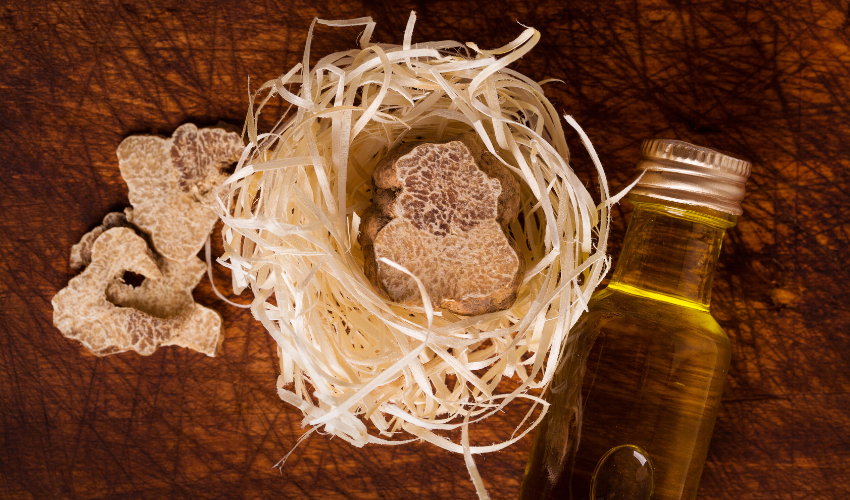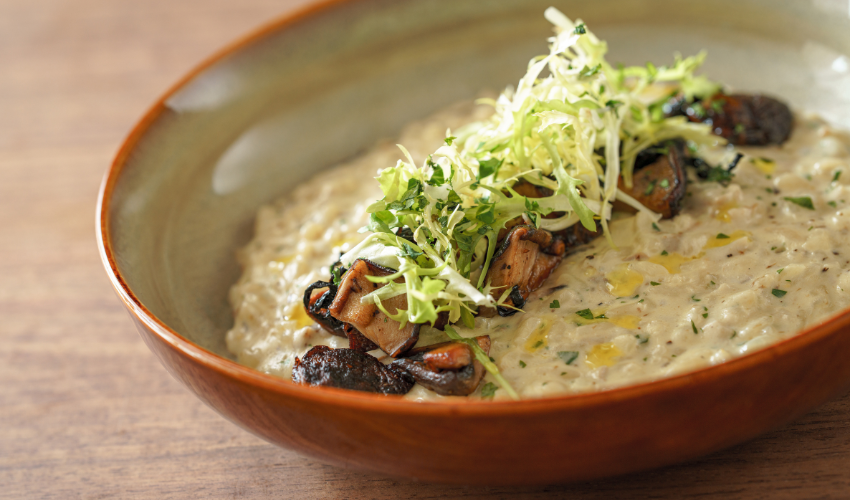Truffle oil has become increasingly popular in the culinary world in recent years, especially among food enthusiasts who seek to elevate their dishes to the next level. But what exactly is mushroom oil made of? Is it derived from the elusive and highly prized truffles themselves, or is it a synthetic product with a similar flavor profile? In this article, we will explore the origins of truffle oil and the ingredients used to create this delectable condiment.
What is Truffle Oil Made of? The Ingredients:
This oil is typically made from one of two sources: natural truffle extract or synthetic flavoring. The type of truffle used in natural oil varies, but the most common varieties are black and white truffles. The flavor of these truffles is intense and earthy, making them a popular ingredient in high-end cuisine.
When it comes to synthetic mushroom oil, the ingredients used to create the flavor vary depending on the manufacturer. However, most synthetic oils contain 2,4-dithiapentane, a compound that gives truffles their characteristic aroma. Other ingredients may include olive oil, grapeseed oil, or other neutral oils to dilute the flavor and provide a more subtle taste.

The Production Process of Truffle Oil:
The production process for this oil can vary depending on whether natural or synthetic flavorings are used. Natural oil is typically made by steeping shaved truffle pieces in a neutral oil, such as olive oil or grapeseed oil. The truffle pieces are left to infuse the oil for several weeks, allowing the flavors to meld together.
Synthetic oil, on the other hand, is made by mixing the synthetic flavoring with a neutral oil. The mixture is then left to sit for a period of time, allowing the flavors to meld together.
Differences between Natural and Synthetic Truffle Oil:
While natural and synthetic oils both contain the same compound that gives truffles their characteristic flavor and aroma, the two products differ in several important ways. Natural oil is generally considered to be superior in taste and aroma, as it contains real truffle pieces that have been steeped in the oil. Synthetic oil, on the other hand, is less expensive and more widely available, but often has a less intense flavor.
Culinary Uses of Truffle Oil:
Mushroom oil can be used in a variety of culinary applications, from drizzling over pasta or roasted vegetables to adding a finishing touch to a grilled steak or risotto dish. The oil can also be used in salad dressings, dips, and marinades to add depth of flavor.

FAQs:
- Is truffle oil expensive?
It can be expensive, especially if it is made from natural truffle extract. However, synthetic mushroom oil is typically less expensive and more widely available. - Can this oil be used in baking?
It is not typically used in baking, as its strong flavor can overpower the other ingredients in a recipe. - Is this oil vegan?
It is typically considered to be vegan, as it does not contain any animal products. - How long does it last?
This oil can last for several months if stored properly in a cool, dark place. However, its flavor will begin to diminish over time. - Can this oil be used for frying?
It is not recommended for frying, as its low smoke point makes it unsuitable for high-temperature cooking. It is best used as a finishing oil or in low-heat cooking applications.
Conclusion
Truffle oil is a flavorful and versatile condiment that can add a touch of luxury to any dish. Whether made from natural mushroom extract or synthetic flavorings, this oil is a popular ingredient in high-end cuisine. Now that you know what truffle oil is made of, you can experiment with its culinary uses and discover new ways to elevate your favorite dishes. Just remember to use it sparingly, as a little bit of truffle goes a long way.






















